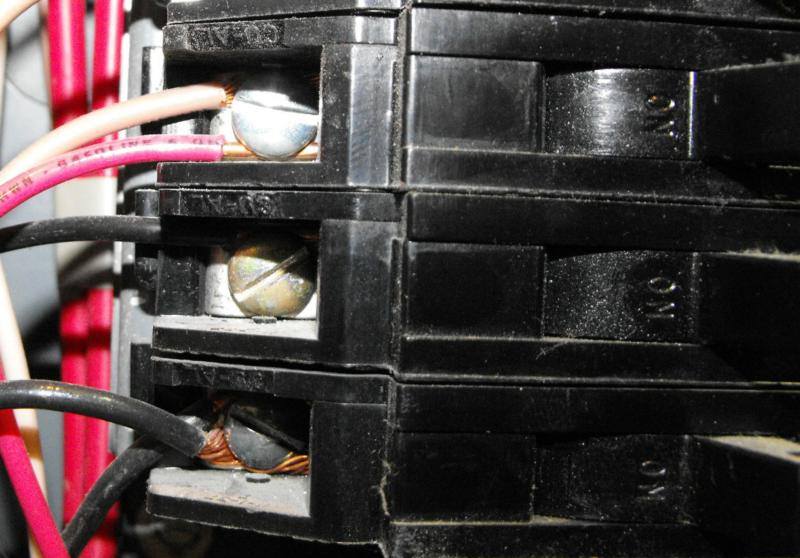Today I want to discuss “double lugging” or “multiple lugging” of wires on circuit breakers.
Double lugging (some say double tapping, although this is not an entirely accurate description) is when more than one wire is terminated under a screw or connector on a circuit breaker or fuse block.
Most circuit breakers are only designed and UL listed for one wire per connection. (Exceptions are some Square D, and some Cutler Hammer/Eaton Breakers). For example, take the average screw-type termination on a circuit breaker. It is not hard to understand that when the screw is turned down over one wire you end up with a very positive connection. When you install one wire on each side—-one of the wires will not end up being quite as tight as the other side and arcing is possible. Since we are not talking about welding, we consider electrical arcing a bad thing.
The other day I came across a panel with several double lugs on circuit breakers that made this issue even clearer—-DIFFERENT KINDS of wires on each side—–solid conductor on one side and stranded conductor on the other side. It should be clear, even to a novice, that there is no way that there will ever be equal pressure on these two different types of wires. The risk of arcing is very high—-all dependent on what kinds of loads are placed on the circuits.

This is not a difficult fix for the electrician. They will just wire-nut the two wires together with a single wire, and run that single wire to the breaker instead of the two wires.
***
Charles Buell, Real Estate Inspections in Seattle
If you enjoyed this post, and would like to get notices of new posts to my blog, please subscribe via email in the little box to the right. I promise NO spamming of your email